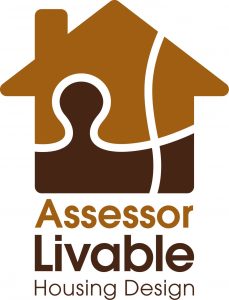
BlogEcolateral Thinking
What makes ECOLATERAL different
Insider Trading in Adaption and Resilience
Consider this !!!!

Here is a chance for all of us to profit from a legal insider trading consortium. If we knew in advance that changes in a particular market were inevitable, driving the demand for a particular product sky-high, would we not buy as many shares as we could in the product manufacturer that services that market or better still begin to supply that market ourselves?
This article is not so much about sustainability and environmental outcomes but more about logic and sensible decision making when we look to invest in medium to long term bricks and mortar assets.
For many , the terms Adaption and Resilience are not familiar considerations when we look at designing a new building or investing in a new asset. Our focus is more on the here and now, concentrating on functionality and form to satisfy the needs of today’s market. Our use horizon, particularly for housing, has reduced to about 30 years with little or no consideration to lengthening that horizon through adaptive and resilient design. The market is not static and we need to consider the challenges of finding suitable and appropriate homes that can accommodate our changing needs over time. Whether for families with young children, a person with a temporary or permanent injury, someone with a disability, or an older person living independently, the building stock must be capable of accommodating their needs. If that can be achieved without the expense of major retro-fitting, then this fit for purpose asset will increase in social and economic value enormously. When you are exposed to how easy and cost effective it is to design for change in the first place you will realise, as we did in Ecolateral, that not including it at base design is incredibly short sighted.
One of the leading initiatives in Australia today for delivering adaptability is the Livable Housing Australia certification. Livable Housing Australia (LHA) is about delivering the design and composition of a building and its surrounds so that it can be accessed, understood and used to the greatest extent possible by all people regardless of their age, size, ability or disability. To deliver this, LHA has developed a national approach to recognising building that meet these needs into the future. It gives national recognition through its’ accreditation system, to buildings that demonstrate their usability & adaptability. Conformance with a logical and low cost set of performance criteria will earn a building Silver, Gold or Platinum certification. LHA certification is carried out by an accredited assessor to provide a third party, independent assessment of the guidelines allowing LHA to be confident of the continued credibility of the award over time.
Ecolateral is an accredited assessor and welcomes any question you may have on delivering a Livable Housing Australia certified building.
Longer Life Expectancy.
One of the impacted sectors of society is the aged. Let’s consider the case for aged needs as an example. One of the primary drivers of our future real estate markets will be age. With age comes injury, restricted mobility, isolation and security needs. More and more buyers will look for accommodation that can meet their physical and psychological needs. Here are some markets statistics:
- Australians aged 65+ the fastest growing age group
- This sector is currently 14% of population, and is expected to rise to 20% by 2033
- Currently there are 3.5 million Australians over 65, which is expected to increase to 6.3 million over the next 20 years. This represents an increase of 2.8 million seniors
- Life expectancy in 1970 was 70 years, in 2016 it is 82, and climbing
- If you are already 65, you can expect to live another 20 years
This shift in user profile will generate a greater need for buildings that can accommodate the challenges of advanced age. It will mean that the buildings we are creating today:
- will be the assets with the greatest return of wealth tomorrow, because they will be lived in longer
- will have a greater flexibility in use and
- will be adaptable and resilient in the face of this huge future market need.
While the aged are naturally our first consideration when we think of adaptability and resilience we must remember that a building that responds to the needs of the aged provides the same barrier free solutions to all segments of our society, irrespective of age or gender.
We now have an opportunity to improve our building stock for the future!!!!
We are happy to provide you with further information on this proactive initiative and ask that you contact us at: john@ecolateral.com or 045 2458923.
For more information on Livable Housing Australia please visit http://www.livablehousingaustralia.org.au/












